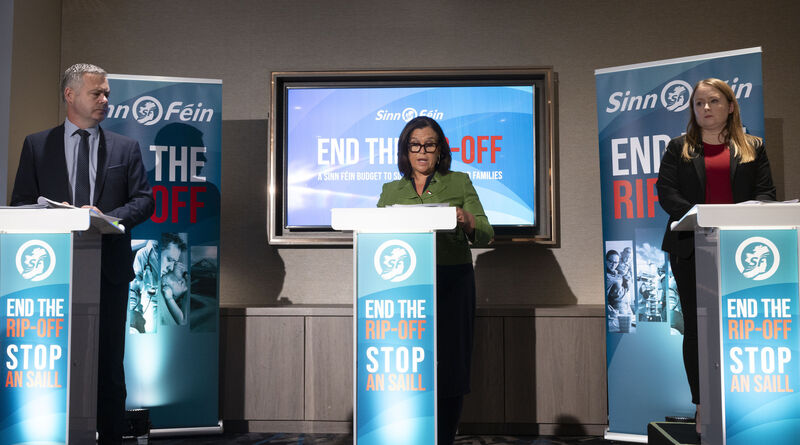Mick Clifford: Catherine Connolly’s win shows how Fine Gael and Fianna Fáil keep getting elections wrong

President elect Catherine Connolly: Her campaign was organised, slick, controlled yet embracing, and sang with purpose.
Here’s how to lose an election these days. Don’t consult with your base, your membership. Don’t give them the chance to have any notions. Surround yourself with a small group of elected and paid officials. Eliminate internal opposition with extreme prejudice at the earliest opportunity. Decide how it’s going to be and deliver that decision as a fait accompli.
Avoid woolly concepts like a vision. Put the frighteners on the membership and electorate. Let them know they will toil and possibly perish without your candidate, your guiding hand. When the plan is fully formed, go to the pub, have a few pints and hope for the best. Don’t have too many pints in case your imagination inflames and you begin to doubt your own expertise.
So it went with Fine Gael in the presidential election. So also it went, to a large extent, with Fianna Fáil.
Here’s how you win an election these days. Make sure the candidate is compos mentis in front of media, particularly social media and podcasts. Gather followers, members, however you want to classify them, to appeal to the electorate on your behalf. Give these followers something to believe in. Beget a movement.
Embrace woolly concepts like a "new republic" into your movement. Learn how to keep a football in the air with your feet in a process known as keepie uppies. Practise long and hard with the left, unless you are a ciotóg. Effect righteous offence when awkward questions are put to you. Be yourself, your authentic self, or at least give it a shot. So it went with president-elect Catherine Connolly.

Too much can be read into last week’s landslide win by Ms Connolly in the presidential election. There is also, however, much to be learned.
Bottom-up beats top-down in today’s political culture. Fine Gael in particular has a lot to learn here. First there was Leo Varadkar, then Simon Harris, and for this election Heather Humphreys.
In each case, somebody decided the way to go was to blow all internal opposition out of the water early doors and march to victory in a fait accompli before members, even the early risers, can get out of bed in the morning.
This allows no time for internal debate, no chance for a second take on the anointed one, no sense of ownership for the members. All of this serves the narrow interests of the anointed one and those on whom he or she will confer favour once victory is secured. It does nothing for the prospects of victory, of engendering passion in members. Just look at the results for the party in recent elections.
Now take a gander at the Connolly campaign. It was organised, slick, controlled yet embracing, and sang with purpose. Some of it was also a brilliant illusion that simply worked. What, for example, is this ‘new republic’ the ‘movement’ behind Ms Connolly were pining for and working towards?
For 14 years, Michael D Higgins has been a president who has enjoyed immense popularity and has carried himself, for the greater part, with dignity and grace. But if he hadn’t been president, would this country look any different today? Would society care less or more for the dispossessed? Would the tenets of a genuine republic be on greater or lesser display?
Ms Connolly may turn out to be an excellent president. But the leader of a movement reaching for a new republic? Maybe surreptitiously in her spare time, if she has any, but not through her official function.
Right now, less than a year into office, the current Government appears to be adrift. Housing, on which this Government will be judged, is in a trough rather than scaling new peaks. Unless something drastic or profound happens in the next 12 months it will probably be too late to make a real mark on what is a societal crisis.
Proposing an alternative has many attractions and now the Connolly template has been presented as a way to go. However, proclaiming a movement in flow is one thing. Actually presenting an agenda beyond We Are Not Fianna Fail/Fine Gael is the real test.
Let’s start with the hard left. People Before Profit is already out of the traps, having organised a meeting for Monday in Dublin on ‘Where Now For The Left?’ The energy is admirable, but the chances of PBP/Solidarity/Rise/Red This/Red That being at the centre of an alternative government is nil.
They do good anger, but have no real interest in governing, as they know it would lead within weeks to torturous internal debate and another inevitable split or two.

For sure, there is every chance a coherent, genuinely social democratic programme could emerge from joined-up thinking by Labour, the Soc Dems and the Greens. In a standard Western polity, these three would represent the core of an alternative left-wing government. Unfortunately, they simply don’t have the numbers and fish in a relatively small pool.
The big kahuna of the left isn’t really left at all, at least not all the time. On a range of policies, Sinn Féin is closer to the Civil War parties than to the social democratic entities to its left.
In recent years, the Shinners have veered right on immigration and climate, most likely in response to a perception that elements of the electorate have also.
Just last year, the party was issuing dog whistles on immigration by constantly using the phrase “open borders”, as if such a concept exists. Equally, the party’s approach to the climate crisis is a moveable feast, entirely dependent on where it perceives the electorate to be, rather than pursuing coherent policies and attempting to persuade.
The party’s central goal of a border poll and reunification can easily be given greater priority by the left-wing parties. But what about other basic tenets of any social democratic movement, such as a tax on domestic property, which the Shinners oppose? Will it really be possible to present a coherent alternative to the electorate?
Then there is the matter of trust and whether Sinn Féin is willing to subsume a long-held instinct to nurture only its own specific goals. Will the party be willing to fully commit to a left alliance completely, even if post-election numbers push it towards coalescing with Fianna Fáil?
The Connolly campaign provided a template for wooing voters, engendering a sense of purpose, mapping out a vision to aspire to.
But putting a competent and confident individual into an office of prestige yet extremely limited power is one thing. Assembling a coalition of the willing to provide a different direction for the country is a completely different ballgame.
With an election up to four years away, they have time on their side. They would want to begin using it pronto.






